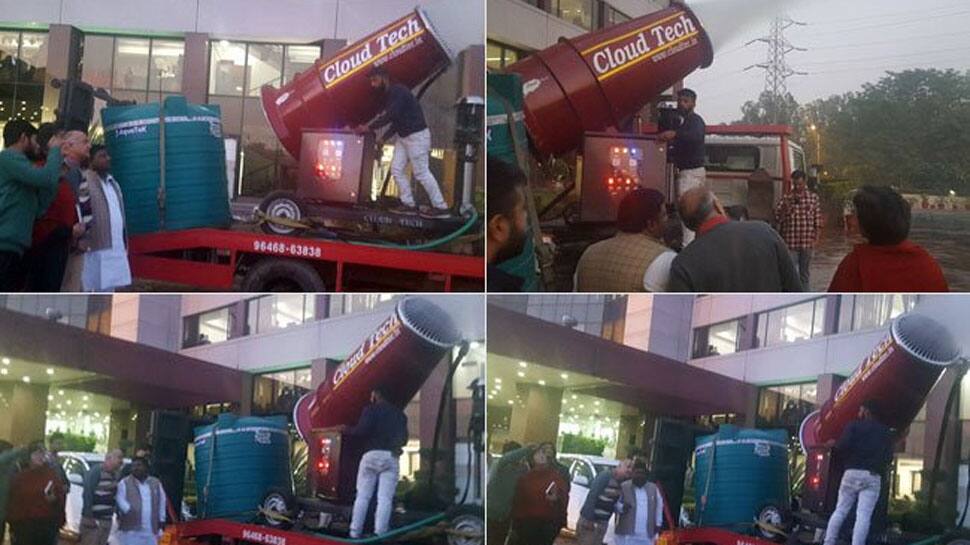New Delhi: The Delhi government on Wednesday sprayed water from an 'anti-smog gun' at the highly-polluted Anand Vihar area.
The device sprays atomized water (tiny droplets of water) up to a height of 50 metres, creating artificial mist, which is in turn expected to stick to air-borne pollutants and bring them down to the ground.
One such device was tested near a pollution monitoring centre in the presence of Environment Minister Imran Hussain and senior officials of his department.
आनंद विहार इलाके में दिल्ली सरकार ने किया एंटी स्मॉग गन का ट्रायल।
भारत में पहली बार इसका ट्रायल हुआ है।
पर्यावरण मंत्री @ImranHussaain रहे मौजूद।— Aam Aadmi Party Delhi (@AAPDelhi) December 20, 2017
However, the real-time concentration of PM2.5 and PM10 at the Anand Vihar monitoring station of the DPCC increased from around 10 am, when the trial started, PTI reported.
The hourly-readings of PM2.5, were 444, 421, 476, 509 and 460 between 10 am and 2 pm while the corresponding readings of PM10 were 630, 608, 736, 842 and 702 microgram per cubic metre (ug/m3).
The 24-hour prescribed standards of these ultrafine pollutants, which trigger respiratory and cardiovascular issues, are 60 and 100 respectively.
The pollution levels did not drop despite the fact that the water spraying from the device, which costs around Rs 20 lakh per unit, was largely centred around the Delhi Pollution Control Committee (DPCC) monitoring station.
Hussain said the government will take a call on whether to use it elsewhere in the city after monitoring data collected by a team of DPCC.
Anand Vihar, a densely populated commercial zone in east Delhi, remains severely polluted through the year due to the presence of a bus terminus, which is unpaved at many places, and its proximity to the Uttar Pradesh border where a large volume of trucks ply.
Besides this, the Delhi government is mulling a series of other measures such as conversion of two-wheelers to electric vehicles and banning diesel generator sets as part of its ‘air action plan’.
Pollution levels in the national capital usually remain poor during winters primarily due to stubble burning from adjoining districts and rapid drop in temperature coupled with high moisture content, factors that trap particulates near the surface.
(With PTI inputs)
















